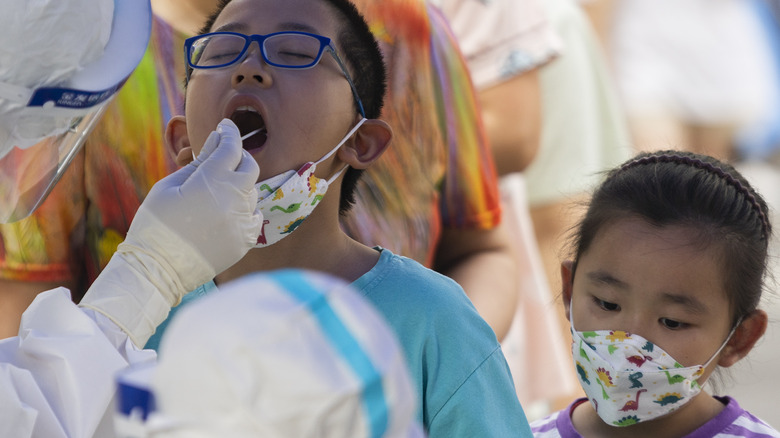Why Experts Think Common Viruses May Have Led To The Mysterious Hepatitis Outbreak In Children
Since the start of 2022, over 1,000 child cases of unexplained hepatitis have been detected in more than 30 countries across the globe, reports CNBC. As researchers continue their efforts to uncover the root cause of the outbreak, two new preliminary studies suggest that it may be more multifaceted than previously thought. These studies have yet to be peer-reviewed.
Available on MedRxiv as pre-print studies, the research suggests that simultaneous infection with adenovirus — as well as another common virus known as adeno-associated virus 2 (AAV2) — may be what's behind the mysterious outbreak of child cases (via CNBC). While adenovirus is responsible for the common cold, AAV2 normally does not present with any symptoms and cannot multiply without the help of another virus, such as adenovirus. In one study, samples from nine hepatitis-positive children were compared with samples from 58 control participants. AAV2 was detected in 100% of the hepatitis-positive cases, but not in any of the control group samples, according to the University of Glasgow researchers.
How COVID-19 lockdowns may have contributed to the outbreak
These findings were reinforced in the second study, in which 28 confirmed hepatitis samples were compared with 128 control samples from both immunocompromised subjects, as well as those with healthy immune system function (per the University of Glasgow). AAV2 was found to be present in only six out of 100 hepatitis-negative children. Comparatively, 16 out of 17 hepatitis-positive samples tested contained traces of adeno-associated virus 2. Between the two studies, AAV2 was detected in 96% of unexplained cases of child hepatitis.
While most healthy individuals are able to successfully fight off a cold virus, researchers suggest that young children's susceptibility to severe infection may be due in part to the COVID-19 pandemic, according to the University of Glasgow. Months of quarantine meant that infants were exposed to adenovirus or AAV2 later on in their development rather than earlier, resulting in reduced immunity (via Healthline).
At this time, however, child infection of AAV2 in conjunction with a helper virus cannot definitely be deemed causation for the outbreak. Even so, researchers believe this is a direction worthy of further investigation. "There's a lot that we still don't know," Dr. Antonia Ho, one of the study authors, told The New York Times. "We felt — because there's been very little in the way of answers of what are the causes — that we needed to release these findings so that other people can start looking for A.A.V.2. and investigate this in more detail."


